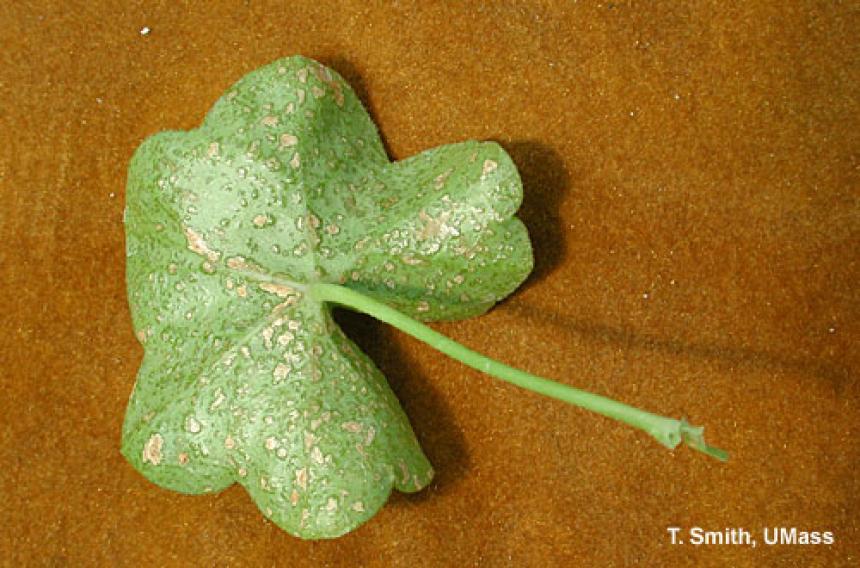Oedema and injury caused by two-spotted spider mites or western flower thrips on Ivy Geraniums are often mistaken.
Oedema blisters form on ivy geraniums when water and solutes build up underneath or possibly within cells, causing the epidermal cells to stretch and collapse. The cells do not rupture as was previously thought. Symptoms of oedema appear as bumps or blisters initially on the undersides of lower or older leaves on a plant. They may then turn brownish or tan and become corky. Severely affected leaves will often turn yellow and fall off the plant.
Growers have been advised to fertilize ivy geraniums once every three feedings with calcium and potassium nitrate to thicken the cell walls to make plants more resistant to oedema. However Kansas State University research showed that supplemental calcium did not have any effect on oedema on ivy geraniums in any of their experiments. Even more surprising, their studies showed that a range of root medium water contents did not have a marked effect on differences in oedema occurrence or severity. This is contrary to previous research reports about the cause of this disorder. Different transpiration rates resulting from dry versus optimal to saturated root medium water contents also had no affect on oedema occurrence on ivy geraniums in their study.
While many other researchers have suggested that water uptake that exceeds plant transpiration may contribute to causing oedema, this one study does not support this theory.
Perhaps selecting ivy geranium cultivars that are resistant to oedema offers the best option at this time for growers to manage it!
See the UMass Extension fact sheet: Oedema and Inumescence
